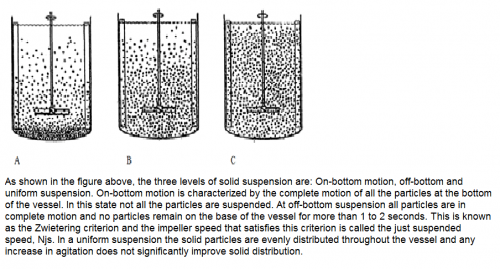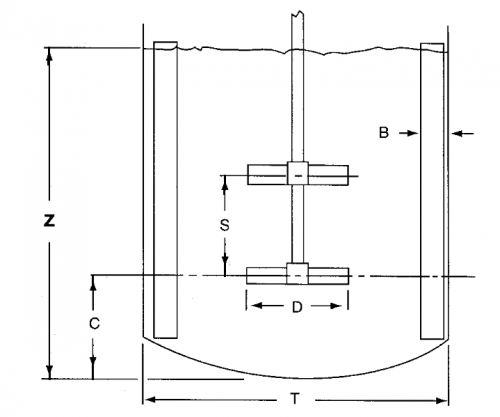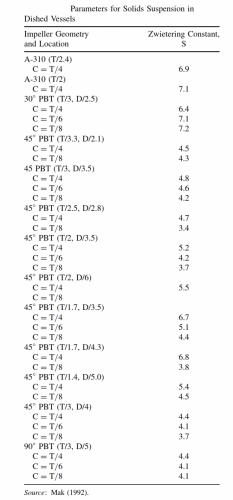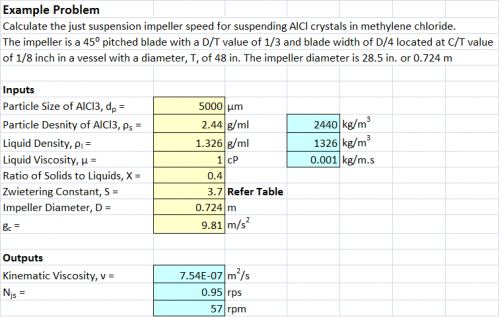 Dear All,
Dear All,Solid suspension and dispersion in a liquid is an important operation carried out in mixing systems. The primary objective of solid-liquid mixing is to create and maintain a solid-liquid slurry, and to promote and enhance the rate of mass transfer between the solid and liquid phases. Such processes are typically carried out in mechanically agitated vessels and reactors. In agitated vessels, the degree of solids suspension is generally classified into three levels: on-bottom motion, complete off-bottom suspension, and uniform suspension. Refer the sketch below. For many applications, it is often important just to provide enough agitation to completely suspend the solids off the tank bottom. Below this off-bottom particle suspension state, the total solid-liquid interfacial surface area is not completely or efficiently utilized. Therefore, it is important to be able to determine the impeller agitation speed, Njs, at which the just suspended state is achieved by the particles.

Correlation for Just Suspended Speed:

where:
Njs = minimum impeller speed to just suspended solid particles in vessel, rps
S = Zwietering constant
ν = Kinematic viscosity of the liquid, m2/s
gc = gravitational constant = 9.81 m/s2
ρs = denisty of solid particle, kg/m3
ρl = denisty of liquid, kg/m3
X = mass ratio of suspended solids to liquid or solid loading'=kg of solids / 100 kg of liquid
D = Impeller diameter, m

Table for Zwietering Constant (S):

Snapshot of an Example Problem in Excel:

This concludes today's blog entry. Would to receive comments from the learned members of "Chereosurces"
Regards,
Ankur.

 FB
FB






It is a very helpful content as I am designing a preparation and storage tank equipped with an agitator to keep the solids suspended in water. However the particle size is unknown but I will have its sieve analysis done soon. Could you please share the calculation sheet so that I may be able to calculate Kinematic viscosity and Njs as soon as possible?
Best Regards
Faraz Shamsey